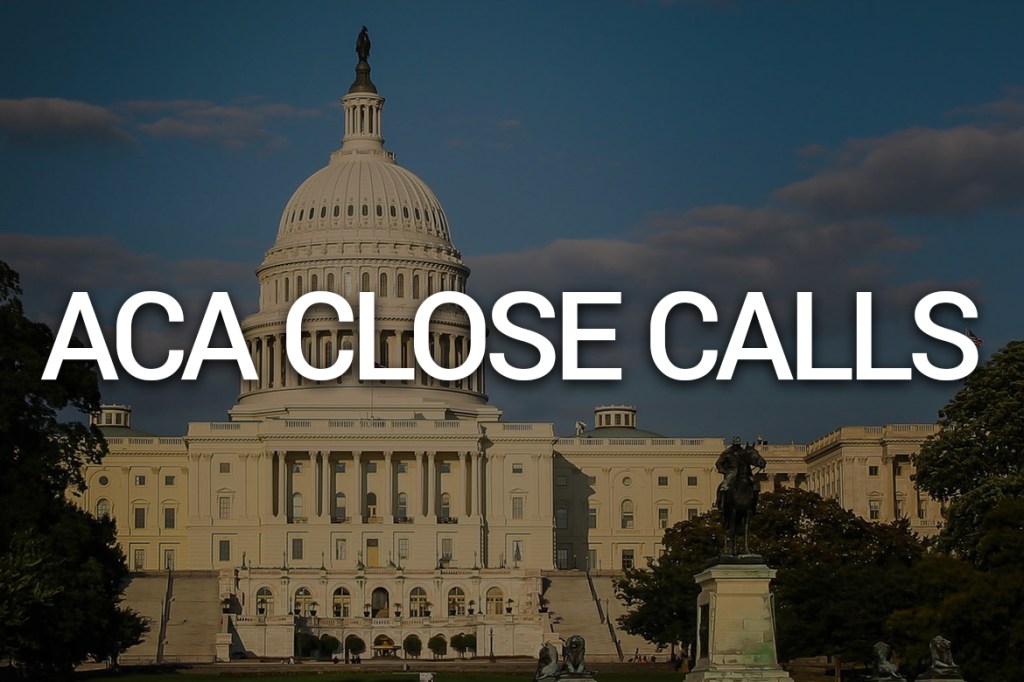Few laws have defied as many existential threats as the Affordable Care Act. A few hours ago, it survived again.
In seven years, it has been to the brink of elimination nearly a dozen times, only to rally back from seemingly impossible odds. Efforts to kill it have come from Congress (including one in 2015 that made it all the way to President Barack Obama’s desk before being vetoed), the White House and the courts. The latest — a repeal bill in the Senate that fell apart, 51-49, with Sen. John McCain (R-Ariz.) casting a decisive vote — occurred Friday in the early morning hours.
Here is a timeline of the ACA’s “near-death” experiences, which occurred before the bill passed, during its implementation and after benefits began to flow.
November 2009 — Abortion Nearly Stalls House Bill
In order to get the Affordable Care Act passed by the House, then-Speaker Nancy Pelosi (D-Calif.), an abortion-rights backer, had to give in to anti-abortion Democrats and include language expanding federal limits on the procedure, over the opposition of a majority of her colleagues.
December 2009 — Democrats Forced To Drop ‘Public Option’
Independent Sen. Joe Lieberman of Connecticut refused to become the 60th vote needed to break a GOP filibuster unless Democratic leaders eliminated a provision to allow some people younger than 65 to opt in to Medicare rather than buy private health coverage.
January 2010 — Scott Brown Upsets Democrats’ Strategy
Brown, a Republican, unexpectedly won the seat left empty by the 2009 death of Sen. Edward Kennedy, depriving Senate Democrats of 60 votes, the number needed to force a vote on the bill. Backers of the bill moved to a complicated Plan B. That involved requiring the House to pass the Senate bill without any changes. Compromises were worked out through the budget reconciliation process that enabled Senate passage with only 51 votes.
March 2010 — Abortion Again Threatens Passage
House leaders still did not have the numbers needed for passage and had to negotiate with anti-abortion Democrats to gain enough votes. Those members forced more changes to the bill to get it across the finish line.
March 23, 2010 — Milestone: Bill Signed Into Law
June 2012 — High Court Upholds Health Law Mandate
Supreme Court Chief Justice John Roberts wrote in a 5-4 ruling that the requirement for most Americans to either have insurance or pay a fine constitutes a tax — and therefore is constitutional. In a separate decision, however, the justices in a 7-2 ruling said that the expansion of Medicaid had to be voluntary for the states.
November 2012 — Barack Obama Re-Elected President
Obama’s opponent, Republican Mitt Romney, had promised to undo the health law.
October 2013 — Healthcare.gov Fails To Launch
The health insurance enrollment website failed repeatedly in its debut. The technical difficulties made the law’s rollout a laughingstock. Only six people were able to sign up the first day. It took several weeks to make the site useable for large numbers of customers.
Jan. 1, 2014 — Milestone: Most Of Law’s Benefits Take Effect
June 2015 — Supreme Court Saves Health Law Again
The high court ruled that subsidies to help people afford coverage should be available in states that ran their own insurance exchanges and those that had defaulted to using the federal government’s website. The case centered on imprecise language in the law.
December 2015 — Repeal Passes Both Houses Of Congress
The House and Senate pass a bill that would have repealed major parts (although far from all) of the ACA, delaying most of the changes for two years to give themselves time to come up with a replacement plan. This was not really an existential threat to the bill, however, because lawmakers knew President Obama would veto the measure, which he did in January 2016.
March 2017 — House Stumbles In First Repeal Effort
With a president ready to make repeal a reality, the GOP-led House’s first try at an ACA overhaul ends in humiliating defeat when the measure cannot muster support from both conservatives and moderates. A subsequent version, however, designed to bring down premiums by loosening some consumer protections, passed the House in May.
June 2017 — Senate Stumbles In Effort To Pass Repeal
After Senate leaders had met behind closed doors for weeks to draft a bill, Majority Leader Mitch McConnell (R-Ky.) postpones the vote when it becomes clear he doesn’t have enough support. He had hoped to have it pass before Congress’ July Fourth recess.
July 2017 — McCain Votes No, Derails ‘Skinny Repeal’
The Senate struggled to craft and then vote on a so-called “skinny repeal” of the health law, but the bill was defeated in a 51-49 vote that prompted gasps in the chamber. Arizona Sen. John McCain, recently diagnosed with brain cancer, had returned to the Capitol just days before and cast the crucial vote allowing Republicans to bring the repeal bill to the floor. But then he, along with Sens. Lisa Murkowski (R-Alaska) and Susan Collins (R-Maine), voted against it.
This story was produced by Kaiser Health News, an editorially independent program of the Kaiser Family Foundation.
